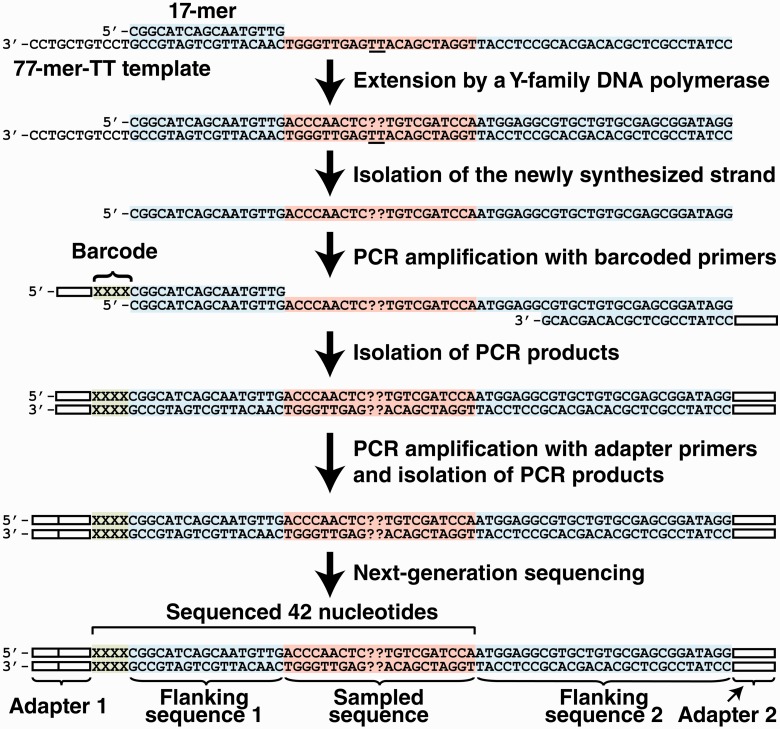Scheme 1.
Lesion bypass products were initially generated by extension of a control or damaged primer/template pair by an individual polymerase. The newly synthesized strands were then isolated by denaturing PAGE and subsequently amplified by two rounds of PCR amplification with primers containing a four nucleotide barcode sequence, and the adapter sequences necessary for next-generation sequencing. The adapter sequences are shown as white bars. The four nucleotide barcode is shown as ‘XXXX’ in green. The sampled sequence and the flanking sequences are shown in red and blue, respectively. The sequencing primer used for next-generation sequencing anneals to the PCR products within Adapter 1 and the 42 nucleotides of sequencing information obtained are indicated by a bracket. The position of the cis-syn TT dimer within the damaged template is underlined and the nucleotide incorporations opposite from the lesion are shown as ‘??’.

